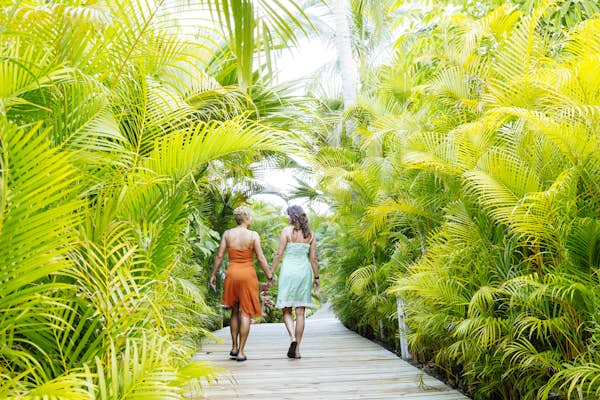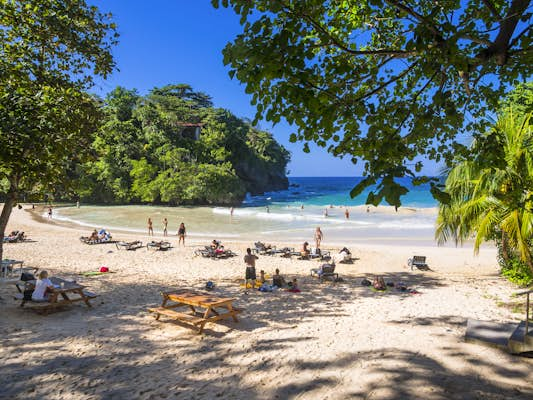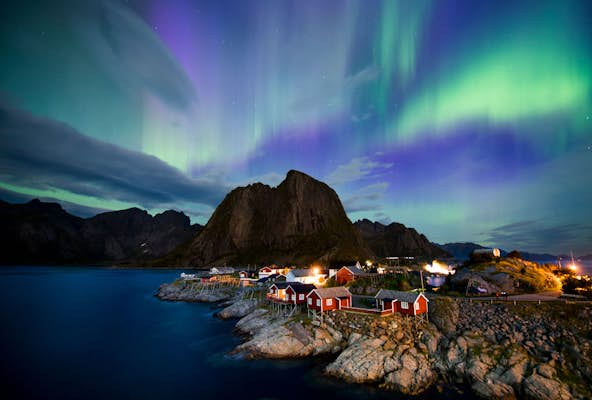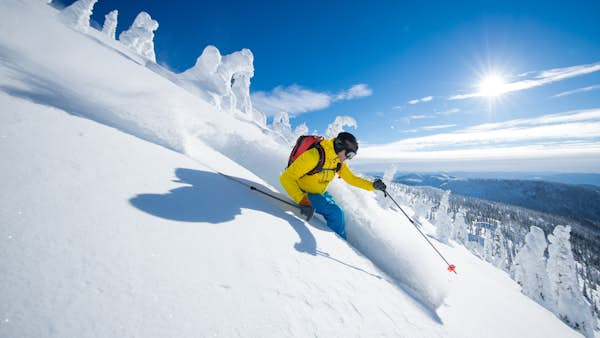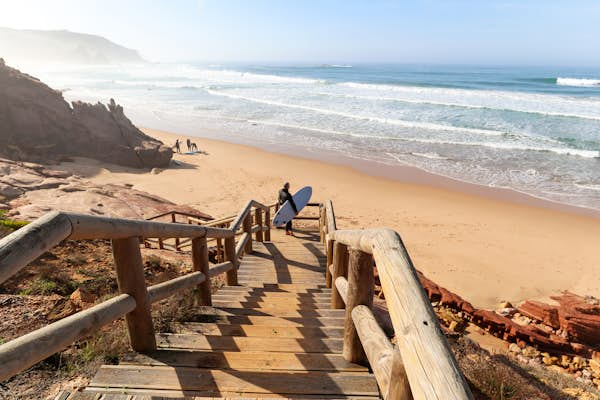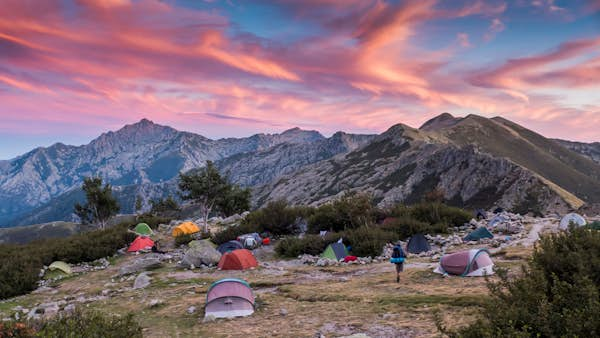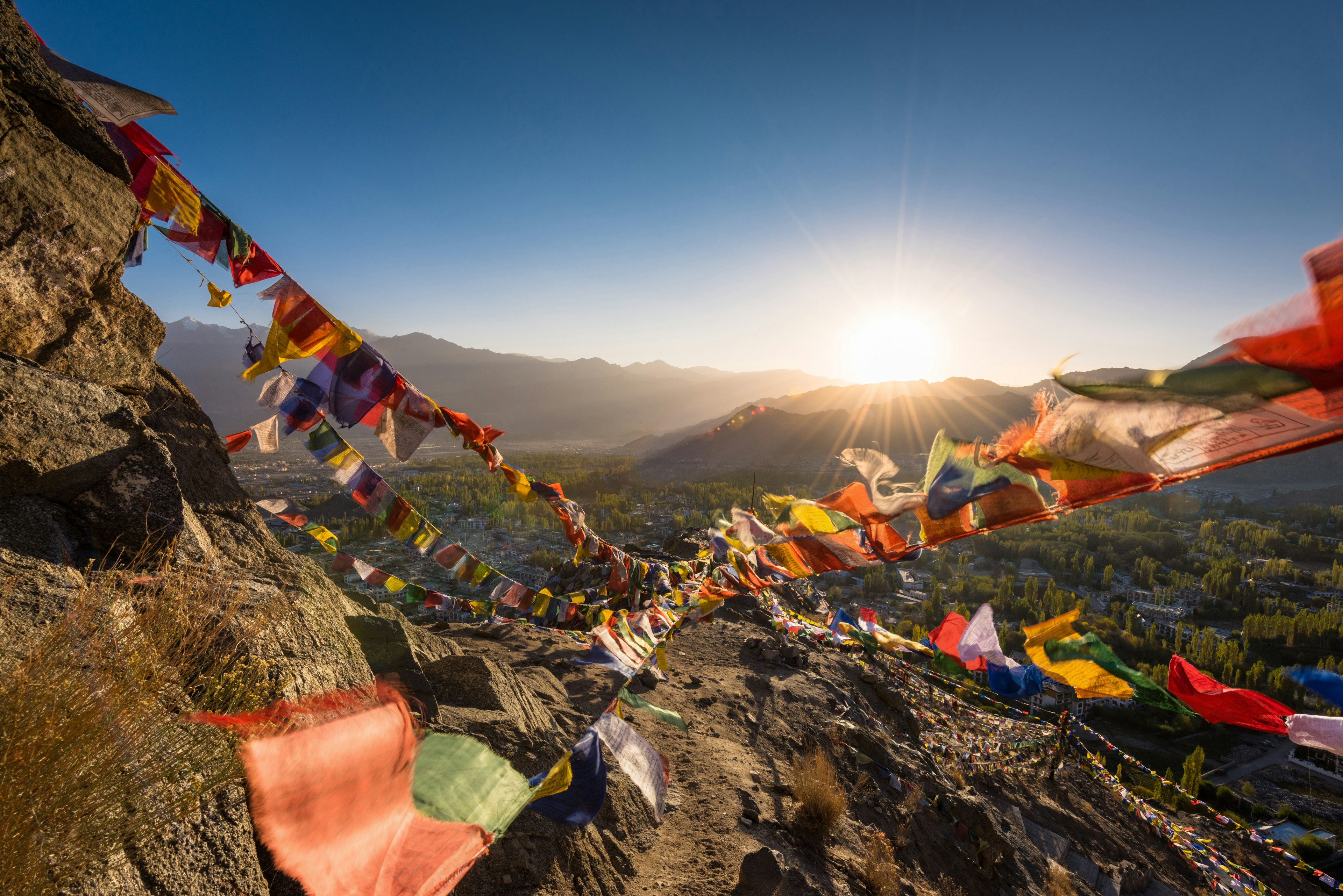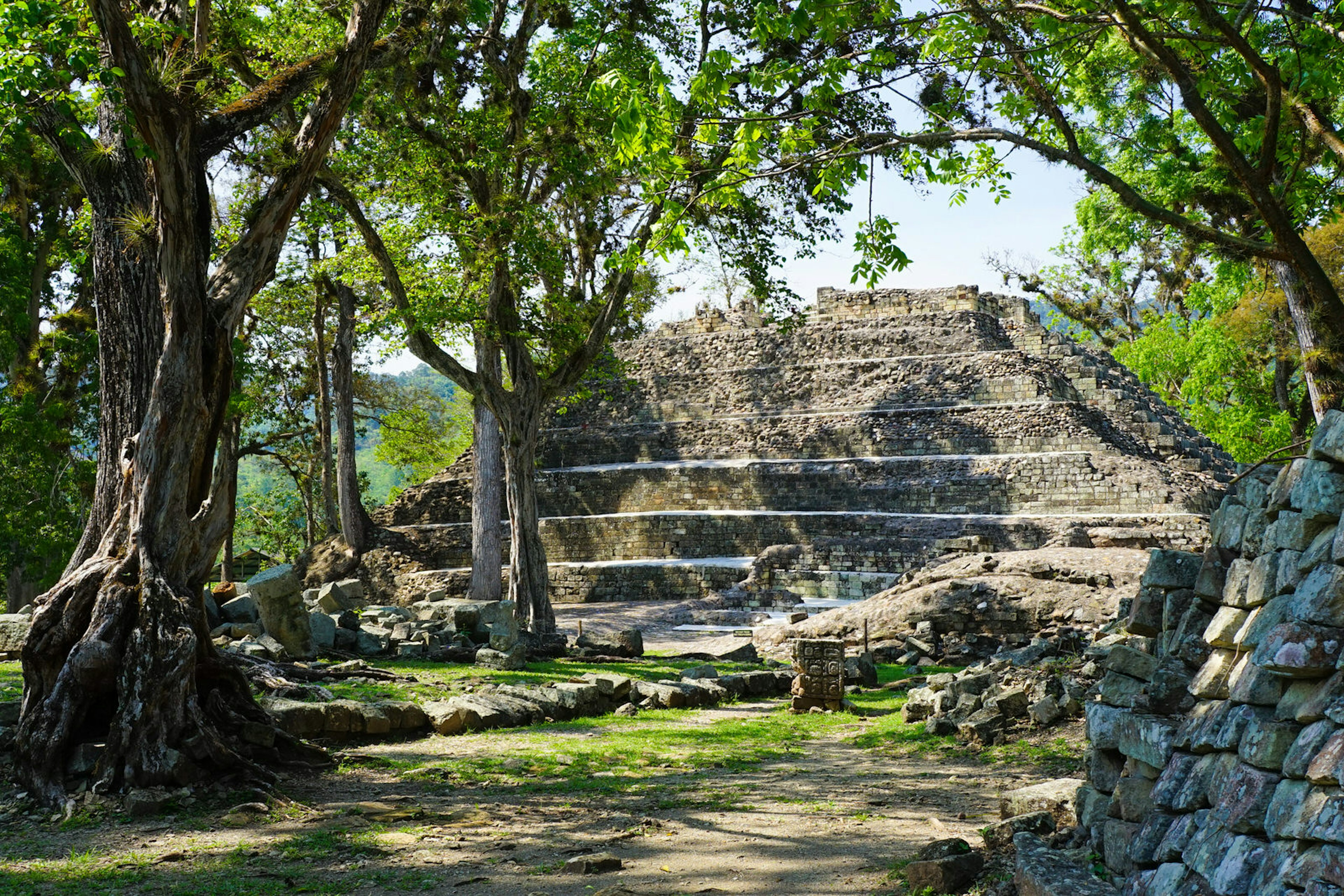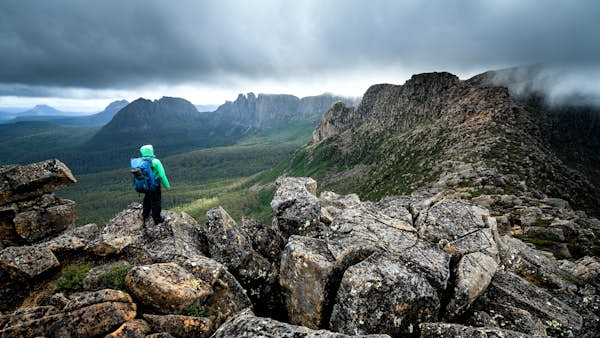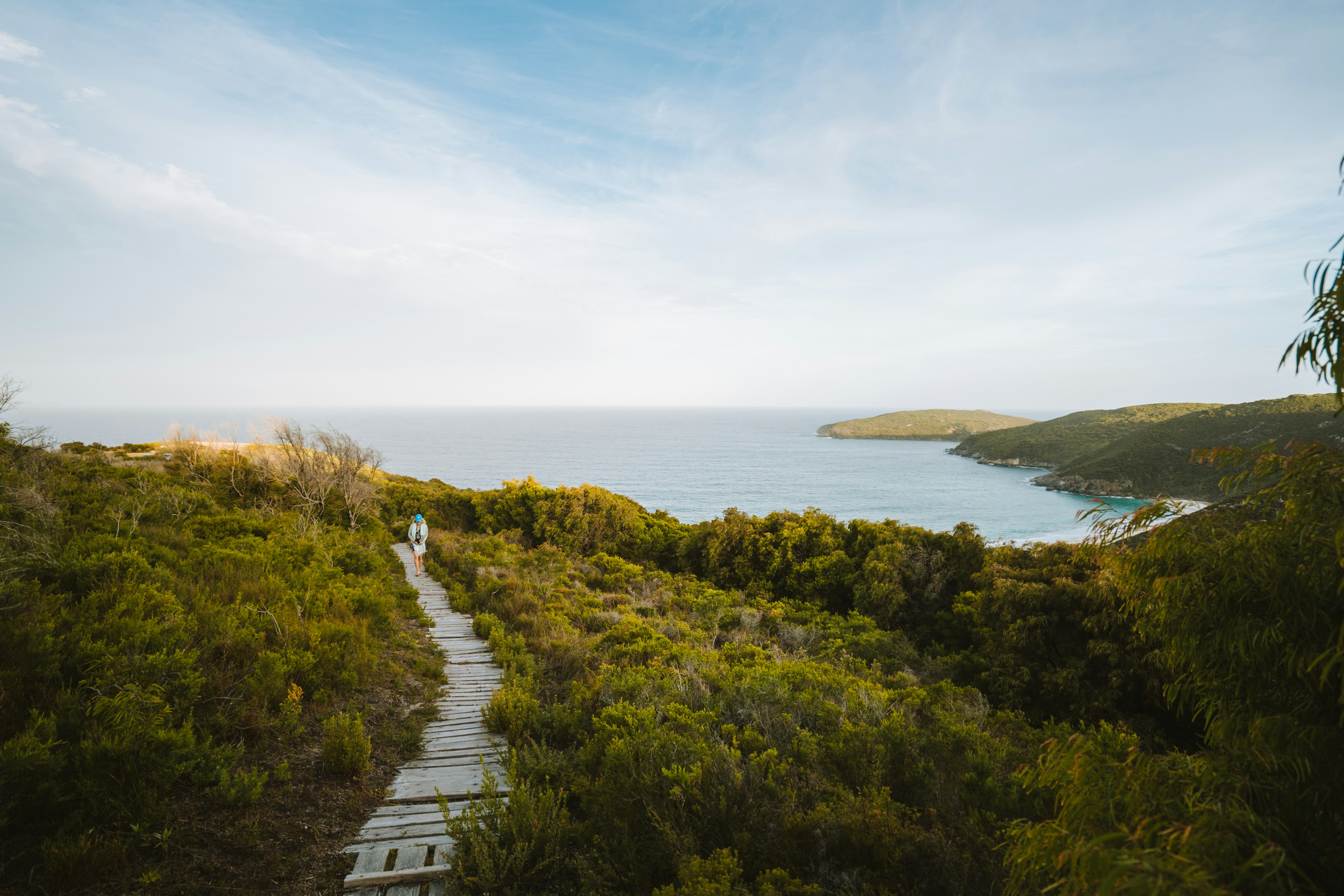Ubicado en el corazón de la Sierra Nevada, el Lago Tahoe resplandece como una luna de cobalto.
El hermoso lago de 190 millas cuadradas, resguardado por picos que alcanzan los 10,000 pies, se aprecia mejor desde su borde sur, donde tapices de flores silvestres se extienden por praderas, playas arenosas brillan de oro, y montañas reflejan sus imágenes en aguas de zafiro.
El color del lago no es casualidad. Lago Tahoe debe su seductora tonalidad azul al aire limpio y agua pura – regalos que no se dan por sentados. Iniciativas de sostenibilidad y conservación como el Plan de Acción Climática 2020 de South Lake Tahoe y ‘Rules to Lake By’ de Visit Lake Tahoe aseguran que el lago persista limpio, puro, y azul, resguardando la magia de Lago Tahoe para futuras generaciones.

La evidencia de que estas iniciativas están funcionando ya es visible. En 2023, un grupo de indagación determinó que Lago Tahoe estaba más translúcido que en las últimas cuatro décadas – lo cual es lo suficientemente claro para ver hasta unos 75 pies bajo la superficie. Estas iniciativas no solo aseguran la región; también permiten a los visitantes involucrarse mientras disfrutan de las actividades que los atrajeron al Lago Tahoe. A continuación, cómo puedes disfrutar de todo lo que el lago tiene para ofrecer, mientras contribuyes a las iniciativas de sostenibilidad que lo mantienen hermoso.

Un reino de aventura al aire libre sostenible
La Costa Sur del Lago Tahoe es más que un cuerpo de agua – es un área de lagos, arroyos, praderas, montañas y bosques. Dicho de otra manera, hay mucho por descubrir. Pasea por paisajes asombrosos en los senderos del Lago Tahoe; hay algo aquí para cada capacidad. Los caminos pavimentados, accesibles para sillas de ruedas, incluyen la Pista para Bicicletas Pope-Baldwin que serpentea a través del bosque cerca de la costa del lago, y la Pista para Bicicletas de South Lake Tahoe, que provee acceso a la Playa El Dorado. En el Centro de Visitantes de Taylor Creek, el Sendero Arcoiris, la Cámara de Perfiles del Arroyo y el anfiteatro son accesibles para sillas de ruedas, y los recorridos de audio están disponibles para ayudar a los visitantes con discapacidad visual.
Si te inclinas más por el senderismo con mochila, caminatas o cabalgatas, dirígete a las casi 64,000 acres vírgenes en Desolation Wilderness. El ascenso de diez millas a Mount Tallac, el punto más alto del parque, se eleva 9,740 pies hasta las nubes para capturar panorámicas del Lago Tahoe y el mundo desplegándose abajo. Mantente en los senderos dedicados y lleva contigo todo lo que traigas. Lleva suficiente agua en una botella reutilizable para mantenerte hidratado y asegurar que este encantador parque natural permanezca tan impresionante y limpio como siempre cada vez que regreses.

Bien que les sentiers autour du lac Tahoe séduisent toute l’année, les activités récréatives sont plus tranquilles au printemps, en automne et en milieu de semaine lorsque le lac reçoit moins de visiteurs. Le printemps tardif et l’automne apportent également des conditions idéales pour le VTT dans le parc bi-étatique Van Sickle ou les chutes et virages palpitants taillés dans le granit du Flume Trail.
En hiver, la neige offre un contraste de carte postale avec le bleu du lac, et le réseau de sentiers se transforme en terrain de jeu pour les raquetteurs et skieurs de fond. Les stations voisines comme Station de Ski Heavenly, Sierra à Tahoe, Kirkwood, et autres zones de ski proposent des milliers d’acres skiables saturés de vues sur le lac. Hansen’s Resort and Tubing Hill est un favori pour les familles qui viennent au lac pour faire de la luge.
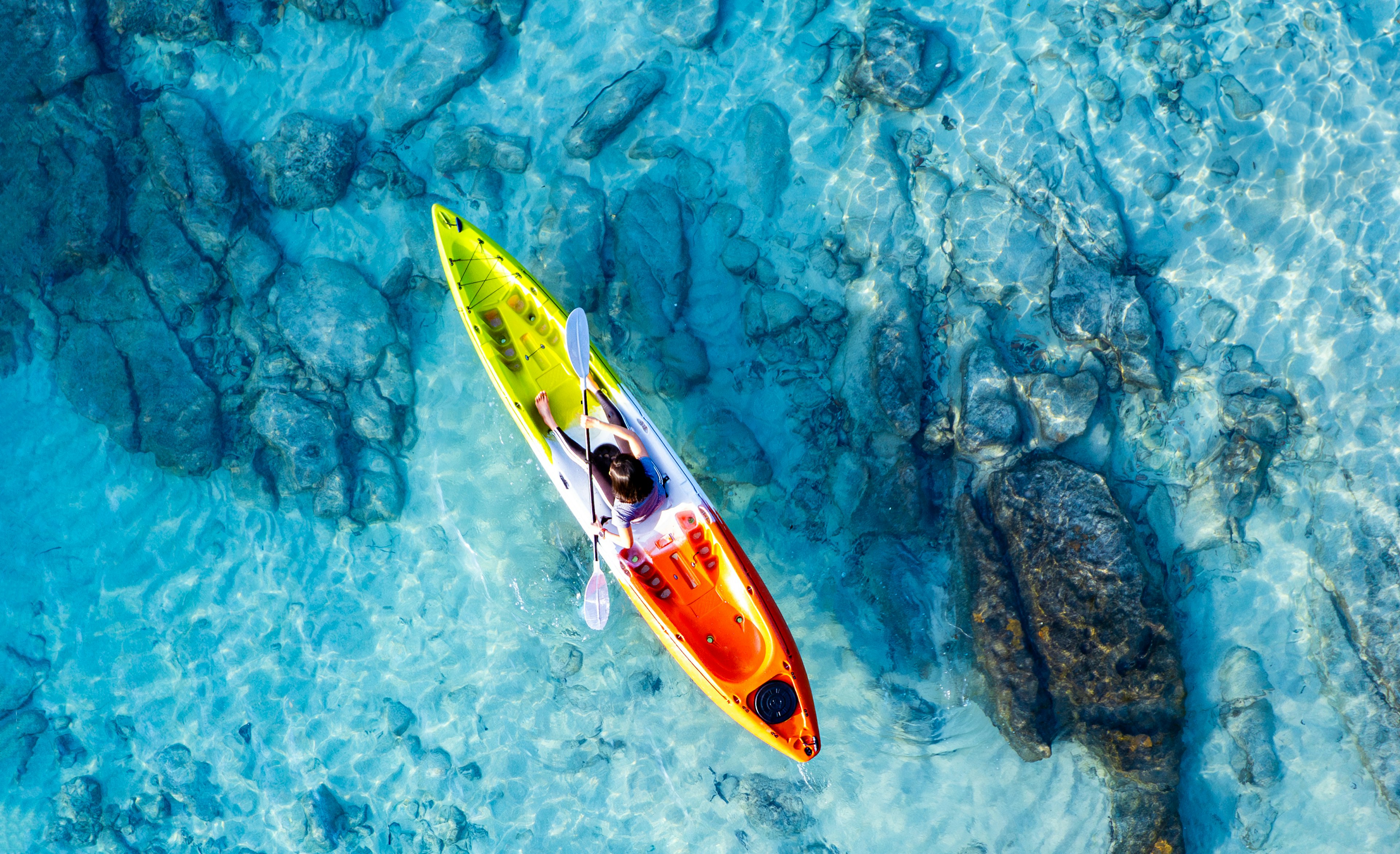
C’est une chose de contempler la légendaire clarté du lac Tahoe debout sur la rive. C’en est une autre de plonger dans un univers aquatique en glissant sur le lac avec un SUP ou un kayak. Que vous accostiez dans une crique paisible ou pagayiez jusqu’à Fannette Island dans Emerald Bay, les sports nautiques sont récompensants de jour comme de nuit. Clearly Tahoe propose des visites guidées et des locations, y compris des expériences nocturnes éclairées par des LED sous les étoiles. Si vous avez emporté votre kayak, protégez l’écosystème en vérifiant le fond pour les plantes ou les espèces envahissantes qui pourraient nuire à l’équilibre délicat du lac.

Savourez des aliments locaux
Après avoir passé des journées à pratiquer des activités outdoor, l’appétit s’ouvre. Heureusement, dîner au lac Tahoe est une aventure de saveurs elle-même. La rive sud du lac Tahoe regorge de restaurants soutenant les agriculteurs locaux et servant les mets les plus frais tout en réduisant leur impact environnemental.
Sprouts Natural Cafe met en avant des ingrédients sains et bio. Smoothies, salades, burritos et grands sandwiches empilés de légumes ou de thon sont parfaits pour un déjeuner à emporter lors d’une journée de randonnée ou de VTT. Si vous préférez voyager léger, arrêtez-vous en descendant des sentiers – le café est ouvert jusqu’à 20h.
Freshies Ohana Restaurant et Bar offre une grande variété d’options, notamment sans gluten, végétaliennes et de fruits de mer au menu. Ahi poke, gaspacho frais et soupes maison font de ce restaurant un favori local. Ohana signifie famille, et il est approprié pour décrire
la atmósfera amigable y relajada del restaurante.

Las opciones de comidas frente al lago incluyen Riva Grill, donde los platos son tan atractivos como las vistas. Los Huevos Rellenos de Langosta, los Palitos de Calabacín y la Ensalada de Salmón Miso Teriyaki son excepcionales. Sin embargo, el restaurante se destaca especialmente por el Wet Woody, un colorido y alcohólico cóctel helado ideal para los días en el lago.
Si después de un día de esquí o kayak se antoja una cerveza fría, dirígete a Cold Water Brewery and Grill. Pide una ronda de prueba para degustar las cervezas ácida, IPA, ale y seltzers de esta cervecería artesanal. También cuentan con un completo menú de cócteles. Estas bebidas se disfrutan mejor con platillos como el bistec a la parrilla, el ramen Miso y las chips de alcachofa.

Opciones de transporte verde en Lake Tahoe
Es sencillo moverse sin un automóvil en South Lake Tahoe. South Shore Bikes alquila bicicletas eléctricas y convencionales para explorar los senderos, ciclovías y aceras de Lake Tahoe. También están disponibles los scooters Lime.
El Shuttle de Microtransporte Lake Link ofrece un servicio de tránsito personalizado, a demanda, de punto a punto. Es similar a un Uber o Lyft comunitario y gratuito. El servicio está disponible de 9am a 7pm durante la semana, extendiéndose hasta las 11pm los viernes y sábados por la noche en temporada alta. Las camionetas con acceso ADA, y los portabicicletas y esquís facilitan moverse alrededor de Lake Tahoe sin coche los 365 días del año. El servicio es fácil de utilizar: simplemente descarga la aplicación gratuita para que puedas explorar uno de los destinos más hermosos del mundo.
De nuestros socios: Visita el sitio oficial de turismo de Visit Lake Tahoe para comenzar a planificar tu viaje hoy y descubrir lugares sostenibles para alojarte.
Patrocinado por Visit Lake Tahoe
Como un medio de inspiración y entretenimiento en viajes, a veces incorporamos patrocinadores de marca en nuestros esfuerzos. Esta actividad está claramente etiquetada en todas nuestras plataformas.
Esta historia fue elaborada de manera colaborativa entre Visit Lake Tahoe y Lonely Planet. Ambas partes proporcionaron investigación y contenido curado para elaborar esta historia. Divulgamos cuando la información no es nuestra.
Con contenido patrocinado, tanto Lonely Planet como nuestros socios de marca tienen responsabilidades específicas:
-
Socio de marca
Determina el concepto, proporciona briefing, material de investigación, y puede ofrecer feedback.
-
Lonely Planet
Proporcionamos expertise, ideas de primera mano y verificamos con fuentes de terceros cuando es necesario.

